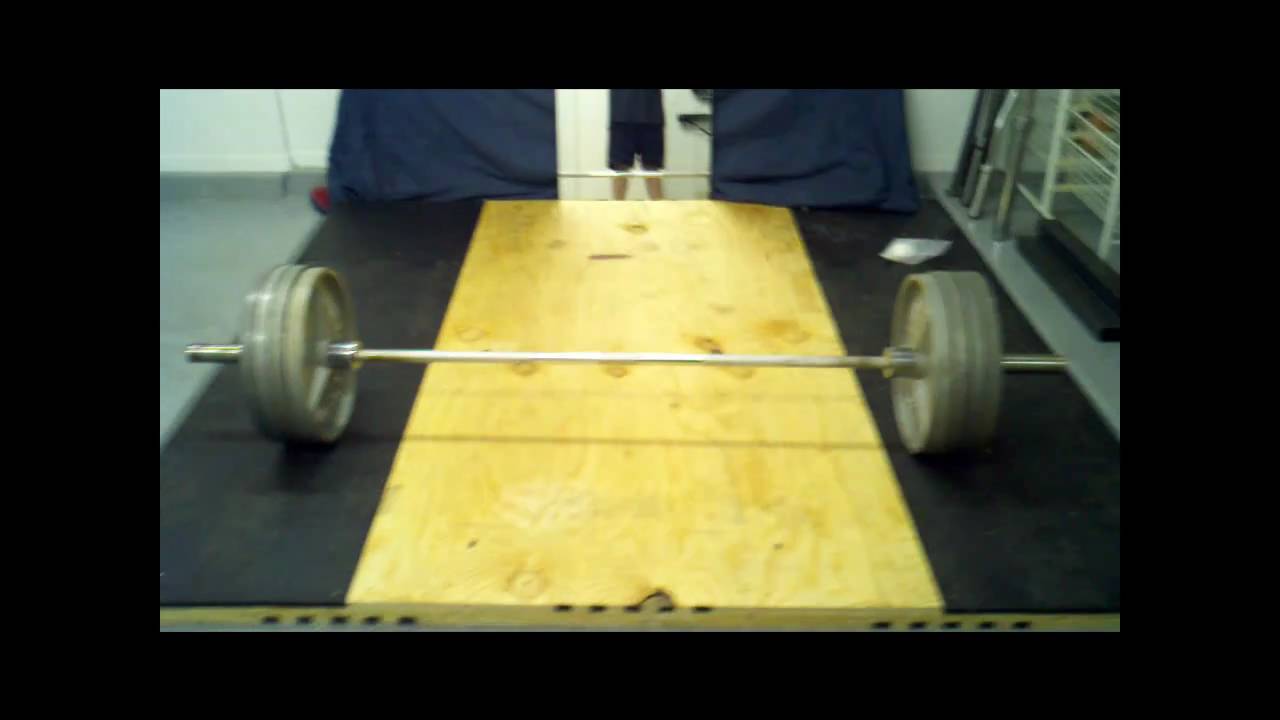Building a Lifting Platform
By Randall J. Strossen, Ph.D.
Start with four sheets of 3/4-inch CDX plywood. Plywood is graded, following the pattern you learned in school, and CD is good enough for our purposes; X just means that it’s exterior. Put two sheets side by side on the ground; then put the other two side by side (crosswise) on top of the first layer, so that the long side runs front to back on the first layer and side to side on the second layer. Use wood glue and screws to fasten these two layers together. At this point, you have an eight foot by eight foot square, 1-1/2 inches thick. Properly assembled, it is tied together as one unit, and it forms the basic understructure of your platform. Note that there are no hollow spots in this structure: there is a famous line about how if you have a hollow spot in your platform, a barbell will automatically find it and punch a hole through it.
To absorb shock, which will extend the life of your bumper plates, and to deaden some of the noise, put rubber where the plates will hit your platform. Since you also need a level surface across your entire platform, you need to build up the middle section, to match the height of the rubber on the outside edges. Here’s the easiest way to do this.
You have an eight-foot square platform, so if you get two pieces of rubber two feet by eight feet, and glue each one, front to back, along the outside edges of your platform, that leaves you with a four foot by eight foot section in the middle?conveniently, you can drop another sheet of plywood into this valley, to make the entire platform level and free from gaps. Try to get rubber at least 1/2-inch thick, and get a piece of AB grade plywood for the center, matching its thickness to the thickness of the rubber. You splurge on the better grade of plywood for this top, middle section since you want a nice, uniform lifting surface.
Line up all the pieces, and then use wood glue, plus screws along the outside edges of the four foot side only, to fasten the center piece of plywood to the understructure, with the A side of the plywood facing up. Use high-strength contact cement to attach the two pieces of rubber to the understructure. You want this entire surface to be level and free from gaps or anything that might snag your heel (which is why you don’t use screws along the front-to-back, eight-foot edge of the center piece of plywood). Because you need good traction, it should go without saying that you don’t want to put anything slippery, like urethane, on the plywood.
This is a proven design, first explained to me by Jim Schmitz, and I can vouch for how well these platforms hold up. Expense aside, the toughest part might be finding the rubber, but look around for used conveyer belt, or something from an agricultural or ranching application, and you should be able to locate something suitable and save money at the same time.
Lift hard and heavy - with a good platform underfoot, there’s nothing to stop you.
